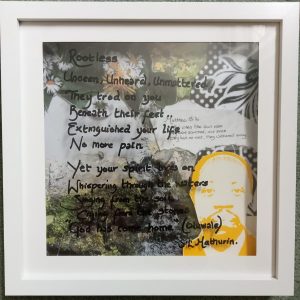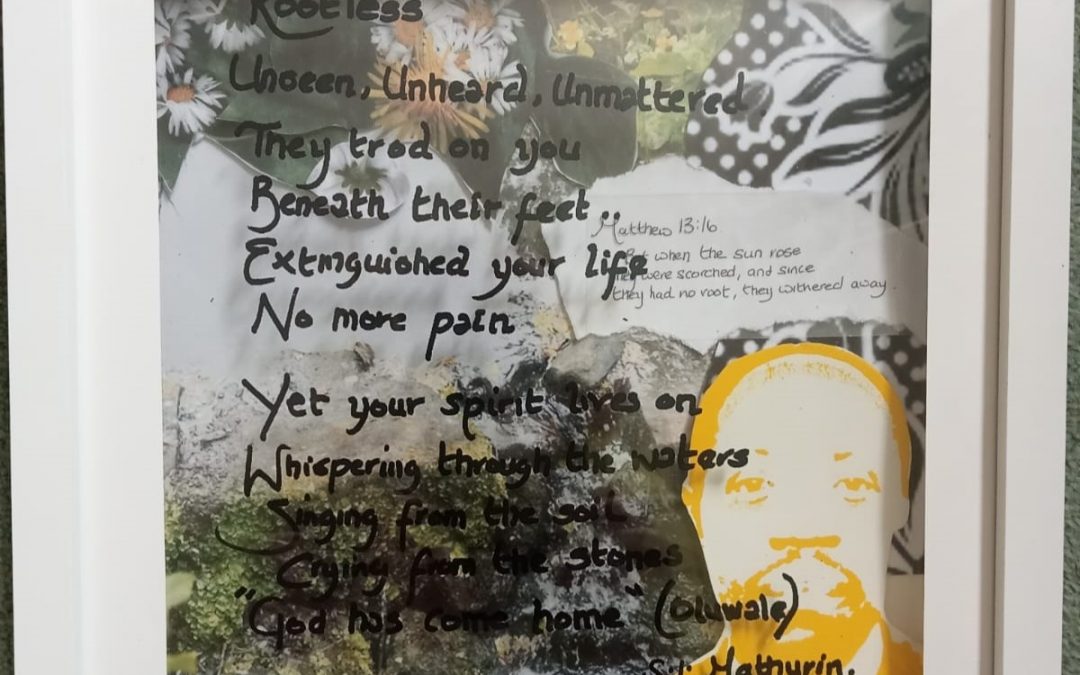In April 2025, at the start of the Art Theology Festival, LCI worked with glass artist Linda Baines and philosophical theologian Dr Tasia Scrutton to host a day retreat for women in ministry. The day drew on Yinka Shobinare’s sculpture Hibiscus Rising, and the legacy of David Oluwale’s life, to explore mental health, a sense of home, faith, and social justice. Siaa-Liane Mathurin, Chief Officer of Wellsprings Together, reflects on her experience of the day, and what the artwork she created means to her.

Siaa’s piece of art, produced during the retreat
I don’t consider myself an artist. Words are my natural language—they’re how I connect, protest, and make sense of the world. But on a recent women-only retreat, I was invited to create through silence and reflection. I came with no plan, only a deep commitment to social justice and the life—and tragic death—of David Oluwale.
David’s story has always stayed with me. A Black British citizen of Nigerian heritage, David lived at the harsh intersections of racism, poverty, presumed mental illness, homelessness, and state violence. His life was extinguished on our streets—unseen, unheard, and unmattered. That became the title of a poem I wrote: Rootless.
While walking through the retreat garden, I found a stream. It was quiet, but alive. As I listened to the water, I imagined David’s spirit whispering through it—still flowing, still present, still calling us to remember. That moment gave me a sense of hope. That no matter how violently a life is silenced, the spirit resists forgetting.
My artwork began to take shape. I layered a screen-printed image of David in bright yellow—a light that could not be extinguished. I added photos of that same stream and a layer of wild daisies and dandelions breaking through thick green grass. These flowers—often dismissed as weeds—spoke volumes to me. We don’t plant them. Most don’t notice them. Many try to remove them. But they bloom anyway—resilient, bright, and unapologetically present. Their yellow mirrored David’s image, tying together defiance and radiance.
As I worked, I became deeply focused—layering meaning, memory, and emotion. The process became almost prayerful.
I also included words from Matthew 13:6: “When the sun rose, they were scorched and withered away because they had no root.” David had no roots here. Systems failed him. Injustices prevented him from laying any. But through this piece—through remembrance—we offer something he was denied: recognition, dignity, and place.
This piece is more than art. It’s lament. It’s protest. It’s love. And it’s hope. Hope that even the unseen can still be honoured. That even the rootless can bloom.
Explore the Art Theology Festival events running throughout the month of May 2025

